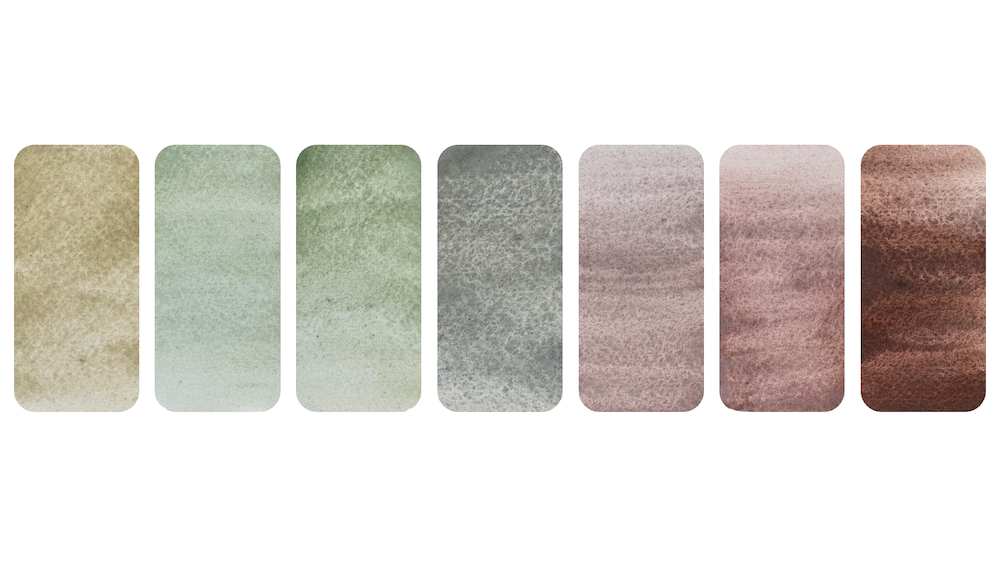Let’s celebrate some of the unsung colors of soil – the cool tones that are surprising and exciting to observe and explore in soils.

Three natural green earths we transform into watercolor paint are YESIL (77), RECOVERY (92), and CELERIAC (101). They all have unique properties but one that is common is their need to be activated with water before use - otherwise, the true strength of the pigment will be missed. They are by nature, light in color, but is due to the natural mineral pigments used.
YESIL is pigmented with celadonite, a phyllosilicate (layered silicon and oxygen sheets) of hydrated iron potassium silicate containing small amounts of aluminum, calcium, magnesium, sodium, and numerous trace elements. The color of celadonite varies considerably from pale green, bright green, bluish-green, olive-green, and black-green, depending upon its minor elements.
RECOVERY is pigmented with glauconite, a greenish mineral of hydrated iron potassium silicate containing trace amounts of other elements. The color of glauconite also varies widely from pale green, bright green, bluish-green, olive green, and black-green, depending upon its minor elements.
CELERIAC is pigmented with both glauconite and celadonite.
Both celadonite and glauconite can form in close proximity to minerals belonging to the group, smectites. Smectites are clay minerals composed of aluminosilicate sheets in layers that shrink and swell upon drying and wetting when water gets between the layered sheets. This results in the celadonite and glauconite mineral pigments being prone to cracking due to the incorporation of some smectites in the adjacent minerals collected as green pigment. It's also why it takes a little time to hydrate these colors upon used.

We offer one natural blue soil mineral color, VIVIANITE (88), which is in fact pigmented with, as the name implies, vivianite. Vivianite is a hydrated iron phosphate mineral that when in the reduced state is colorless and upon photo-oxidation, transforms to a blue color. More about vivianite here and here.

PALE HEMATITE (76), VIOLET HEMATITE (84), and MAFIC PURPLE (90) are three colors we offer that can broadly be characterized as purple.
As you have likely gathered, minerals express a wide range of colors (and other properties) even when classified under the same name. Hematite is no different, in fact, I mentioned hematite in the previous post about soil color as being an intense red pigment. Different deposits of hematite are used as a pigments for the colors mentioned above with a range in colors from light purple to dark brownish purple. Hematite is an iron oxide (Fe2O3) common in soils and geologic materials. Mafic Purple is named as such because the hematite pigment has volcanic origins.

